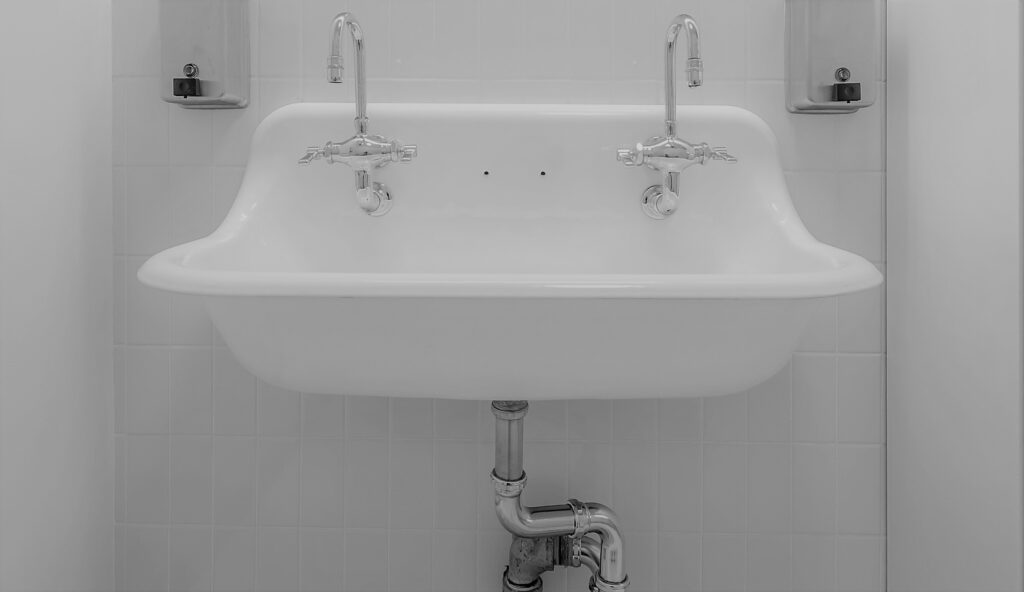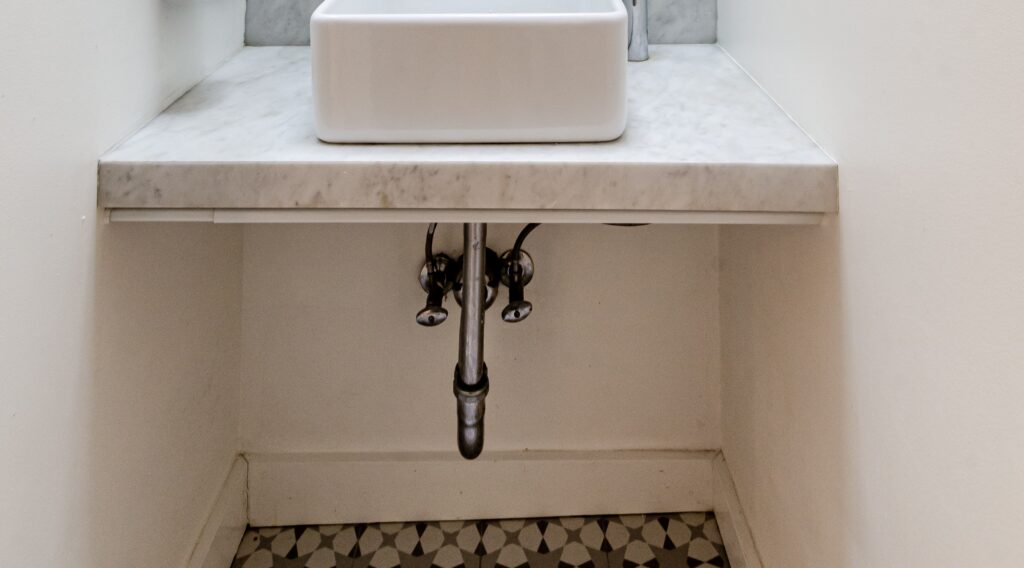
Are you unable to unscrew the nut on your kitchen sink faucet? You’re not alone. Many people have trouble with this task, especially if they don’t know where to start. In this blog post, we’ll show you how to tighten the nut under your kitchen sink using a kitchen faucet installation tool. Read on for instructions!
Steps Guide of How to Tighten Kitchen Faucet Nut Under Sink

If you’ve ever had a kitchen faucet that was a little too loose, you know how annoying it can be. Thankfully, there are a few simple steps you can take to tighten it up.
Steps of How to tighten faucet under sink
Stage I: Clear the area beneath your sink
One of the most common problems with leaks beneath the kitchen sink is that the faucet nut is not tightened properly. In order to fix this, you will need to clear the area beneath your sink so that you can access the nut. This can be done by removing any dishes, food, or other items that are in the way.
Once you have cleared the area, locate the nut and tighten it with a plumber’s wrench under the sink. If the problem persists, you may need to replace the washer or O-ring. With a little patience and a faucet nut removal tool, you can easily fix a leaky kitchen faucet.
Stage II: Ensure Proper Lighting
When tightening the kitchen faucet nut under the sink, be sure to have proper lighting. This will make it easier to see what you are doing and help prevent mistakes. Once you have the faucet lose, turn on the water to check for leaks. If there are any, tighten the nut a bit more until the leak stops.
Be careful not to over-tighten, as this can damage the faucet. When you are finished, turn off the water and dry the area around the sink to prevent rusting. With proper lighting and a little patience, tightening a kitchen faucet nut under the sink is a simple task that anyone can do.
Stage III: Choose the Right Tool to Tighten Kitchen Faucet
When it comes to tightening a kitchen faucet nut under the sink, you need to choose the right tool for the job. The most common tool used is a wrench, but this can often be difficult to use in confined spaces. Instead, try using a set of pliers. First, identify which way the nut needs to be turned in order to tighten it and remove the kitchen faucet nut tight space.
Next, position the pliers so that they are perpendicular to the nut. Finally, apply pressure to the handles of the pliers until the nut is tight. By following these simple steps, you can quickly and easily tighten a kitchen faucet nut without causing any damage.
Stage IV: Adjust the Position of The Faucet
If your kitchen faucet is starting to feel loose, it might be time to tighten the nut underneath the sink. The process is relatively simple and just requires a few tools. First, locate the shut-off valves for the water supply and turn them off. Next, place a bucket under the sink to catch any water that might drip out. Then, use a wrench to unscrew the large nut that secures the faucet to the sink.
At this point, you should be able to adjust the position of the faucet and tighten the nut as needed. Once you’re finished, turn on the water supply and test the faucet to make sure it’s secure. With a little effort, you can keep your kitchen faucet functioning properly for years to come.
Stage V: Tighten the Nut
If you notice that your kitchen faucet is leaking, the first step is to tighten the nut under the sink. This nut connects the water supply lines to the faucet, and over time, it can become loose. To tighten the nut, simply turn it clockwise with a wrench or pliers. You may need to use a little force, but be careful not to over-tighten, as this could damage the threads.
Once the nut is tight, turn on the water supply and check for leaks. If you still see a leak, you may need to replace the washer or O-ring. With a little basic maintenance, you can keep your kitchen faucet in top condition for years to come.
Tool to Tighten Faucet and Basin Nut
kitchen faucet wrench to tighten the faucet
A kitchen faucet wrench is a tool specifically designed to help tighten kitchen faucets. It’s simple to use: just insert the wrench into the opening at the base of the faucet, and then turn it until the faucet is tight. You may need to use a little bit of force, but if you do it slowly and carefully, you should be able to get the job done without any problems.
If you don’t have a kitchen faucet wrench, don’t worry – you can probably find one at your local hardware store. They’re relatively inexpensive, and they can save you a lot of frustration (and money) in the long run. So if you’re having trouble tightening your kitchen faucet, pick up a wrench and give it a try – you might be surprised at how easy it is to fix the problem.
basin wrench alternative
There are a few different ways that you can tighten a faucet or basin nut without using a basin wrench. One way is to use a pair of pliers. You can also use an adjustable wrench, but be careful not to overtighten the nut. Another option is to use a socket wrench with the appropriate sized socket.
If you don’t have any of these tools, you can also try using a screwdriver. Just be careful not to strip the screws. With a little patience and elbow grease, you should be able to Tighten the Faucet and Basin Nut without any problems.
Another Alternative Way to Faucet Nut Wrench
Duct tape
Duct tape is a versatile product that can be used for a variety of purposes, including repairing plumbing. If you have a loose faucet or basin nut, you can use duct tape to tighten it and prevent leaks. First, clean the area around the leak so that the duct tape will adhere properly. Then, wind the duct tape around the joint, overlapping each layer by about half an inch.
Be sure to wrap the duct tape tightly so that it doesn’t come loose. Once you’ve completed one layer, repeat the process with another layer of duct tape. You can also use duct tape to temporarily stop smaller leaks until you have time to make a more permanent repair.
Make some room for yourself
When using duct tape to tighten a Faucet and Basin Nut, be sure to leave some room for yourself. This will help to prevent the duct tape from sticking to itself and making it difficult to remove. Additionally, be sure to use a small piece of duct tape so that you can easily remove it when you’re finished.
Take your strips and tear them
Simply take a strip of duct tape and wrap it around the faucet or basin nut, then use your fingers to twist the tape tight. The tape will create a seal that will prevent water from escaping. You can also use duct tape to temporarily fix a cracked pipe or hose. Just wrap the tape around the affected area and twist it tight. The repair may not be permanent, but it will hold long enough for you to make a more permanent fix.
Curl across the nut
Simply curl the tape around the nut, and then use it to tighten the nut by pulling on the tape. The key is to make sure that you keep the tape tight as you pull it so that the nut doesn’t have a chance to loosen. Once the nut is tight, simply cut off the excess tape and you’re done.
If you still looking for more guide then you visit here.
Yank the tail with maximum force
If you’re trying to tighten a faucet or basin nut and the traditional methods aren’t working, you may need to resort to duct tape. yanking the tail of the duct tape with maximum force can help to give you the extra tension you need to get the job done. This method may not be ideal, but it can be a lifesaver in a pinch. Just make sure that you use enough force to get a good grip, otherwise, you could end up making the problem worse.
Why was your Faucet Leaking?
There are several reasons why a faucet may start to leak, and understanding the cause can help you to fix the problem quickly.
One of the most common reasons for a leaking faucet is a worn washer. The washer is a small rubber disc that helps to seal the joint between the spout and the handle. Over time, this disc can become hardened or damaged, causing it to leak. Replacing the washer is usually a fairly easy repair that anyone can do.
Another common cause of leaking faucets is a faulty O-ring. The O-ring is a small rubber ring that helps to create a watertight seal between the valve seat and the ball. If this ring is damaged or dried out, it can cause water to leak from the faucet.
In some cases, a leaking faucet may be caused by more serious damage, such as a cracked valve seat. The valve seat is the part of the faucet.
FAQs
Why is my kitchen faucet base loose?
The most likely reason for a loose kitchen faucet base is that the mounting nuts have come loose. The mounting nuts secure the faucet to the sink or countertop, so if they’re loose, the faucet will be loose as well. Tightening the mounting nuts should fix the problem.
How do you tighten a Delta kitchen faucet base?
To tighten a Delta kitchen faucet base, use a wrench to tighten the mounting nuts. The mounting nuts are located under the sink, so you may need to remove the sink basin to access them.
How do you remove a mounting nut from a kitchen faucet?
If you need to remove a mounting nut from a kitchen faucet, use a wrench to loosen it. You may need to use pliers or an adjustable wrench to get a good grip on the nut. Once the nut is loose, you should be able to unscrew it by hand.
How do you remove a Delta faucet without screws?
Most Delta faucets are secured with screws, but some models may have a snap-fit design. If your Delta faucet doesn’t have any screws, you may be able to remove it by gently prying it up from the sink or countertop. However, you run the risk of damaging the faucet or the surface.
How to tighten kitchen faucet base?
To tighten a kitchen faucet base, use a wrench to tighten the mounting nuts. The mounting nuts are located under the sink, so you may need to remove the sink basin to access them.
If you want to replace roman tub faucet then check the guide on how to replace roman tub faucet with no access panel.